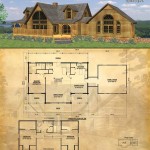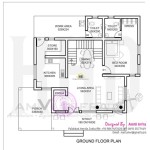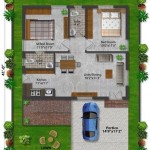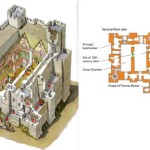Bungalow Sears House Plans: A Legacy of Affordable Style
Sears, Roebuck and Co., a retail giant of the 20th century, offered much more than just appliances and clothing. From 1908 to 1940, the company sold complete houses through their mail-order catalog, a revolutionary concept that made homeownership attainable for a wider range of Americans. These kit homes, shipped via railroad boxcar, included pre-cut lumber, hardware, and even paint, ready for assembly on a pre-prepared foundation. Among the various architectural styles offered, the bungalow proved particularly popular, cementing its place as a classic American home design.
The bungalow style, with its origins in the Bengal region of India, adapted well to the American landscape. Characterized by low-pitched roofs, wide overhanging eaves, and spacious front porches, the bungalow embodied simplicity and practicality. Sears offered a diverse catalog of bungalow designs, ranging from compact one-story homes to larger two-story variations, accommodating families of varying sizes and budgets.
The affordability of Sears homes was a key driver of their popularity. By leveraging efficient manufacturing processes and the reach of their vast distribution network, Sears could provide homes at significantly lower costs compared to traditional construction. This accessibility opened doors to homeownership for working-class families and contributed to the growth of burgeoning suburbs across the United States.
The Sears Modern Homes catalog provided prospective homeowners with a wealth of choices. Detailed floor plans, material specifications, and pricing information empowered individuals to select the perfect home to suit their needs and preferences. The catalog also offered various customization options, allowing for modifications such as adding a fireplace, expanding the porch, or altering the window arrangements. This flexibility contributed to the diversity of Sears homes found across the country, even within the same model line.
Identifying a Sears home today can be a fascinating exercise in architectural detective work. Original blueprints, shipping labels, and hardware markings can offer definitive proof. However, these elements are not always present. Certain architectural details common to Sears bungalows can serve as clues, such as distinctive millwork, specific window configurations, and the presence of "modern" features like built-in cabinetry and ample closet space, which were considered innovative for the era.
Several popular Sears bungalow models stand out for their enduring appeal. The "Alhambra," with its distinctive dormer windows and wrap-around porch, exemplifies the romantic ideal of the bungalow lifestyle. The "Crescent," a more compact design, provided comfortable living for smaller families. The "Arlington," featuring a grand staircase and more elaborate detailing, catered to those seeking a touch of elegance. These are just a few examples of the diverse range of bungalow styles offered by Sears.
The legacy of Sears bungalows extends beyond their architectural charm. These homes represent a pivotal moment in American history, demonstrating the democratizing potential of prefabrication and mass production. Sears kit homes allowed families to realize the dream of homeownership, contributing to the growth of the American middle class and shaping the suburban landscape we know today.
Preserving these historic homes is an important undertaking. Many Sears bungalows remain standing, offering a tangible connection to the past. Restoration efforts often focus on maintaining the original character of these homes while updating them with modern amenities to suit contemporary lifestyles. Organizations dedicated to the preservation of Sears homes provide valuable resources and support for homeowners undertaking these projects.
The readily available information regarding Sears homes, including original catalog reproductions and online forums, facilitates research and identification. This accessible history allows current owners and prospective buyers to delve into the rich heritage of their homes and appreciate the ingenuity of the Sears Modern Homes program. Studying these plans provides insight into the construction methods of the era and the evolution of residential architecture.
The impact of Sears on the American housing market remains significant. While the Sears Modern Homes program ended decades ago, its influence can still be seen in the continued popularity of the bungalow style and the ongoing exploration of prefabrication and modular construction techniques. The Sears kit home stands as a testament to the power of innovation and accessibility in shaping the American dream of homeownership.

Sears Bandon Craftsman Style Bungalow 1923 Kit Houses

Craftsman Style Bungalow 1923 Sears Modern Home Kit House Walton

Do You Live In A Sears Roebuck Kit Home Bungalow House Plans Catalog Homes

Homes Of Today Sears Kit Houses 1932 Bungalow House Plans Floor Cottage

1936 Sears Kit House Dayton The Was Offered During 1930s By Roebuck It S A Mor Bungalow Plans Vintage

Classic Craftsman Bungalow Sears Modern Home No 264b234 Inglenook Hollywood

Sears Modern Homes House Kits From Catalogs Hooked On Houses

Sears Roebuck Kit House The Bedford Bungalow Plans Craftsman Vintage

Sears S Are Going Away But The Company Kit Houses Live On Standard

Vintage Small House Plans 1923 Sears Brookside Craftsman Style Bungalow Kit








